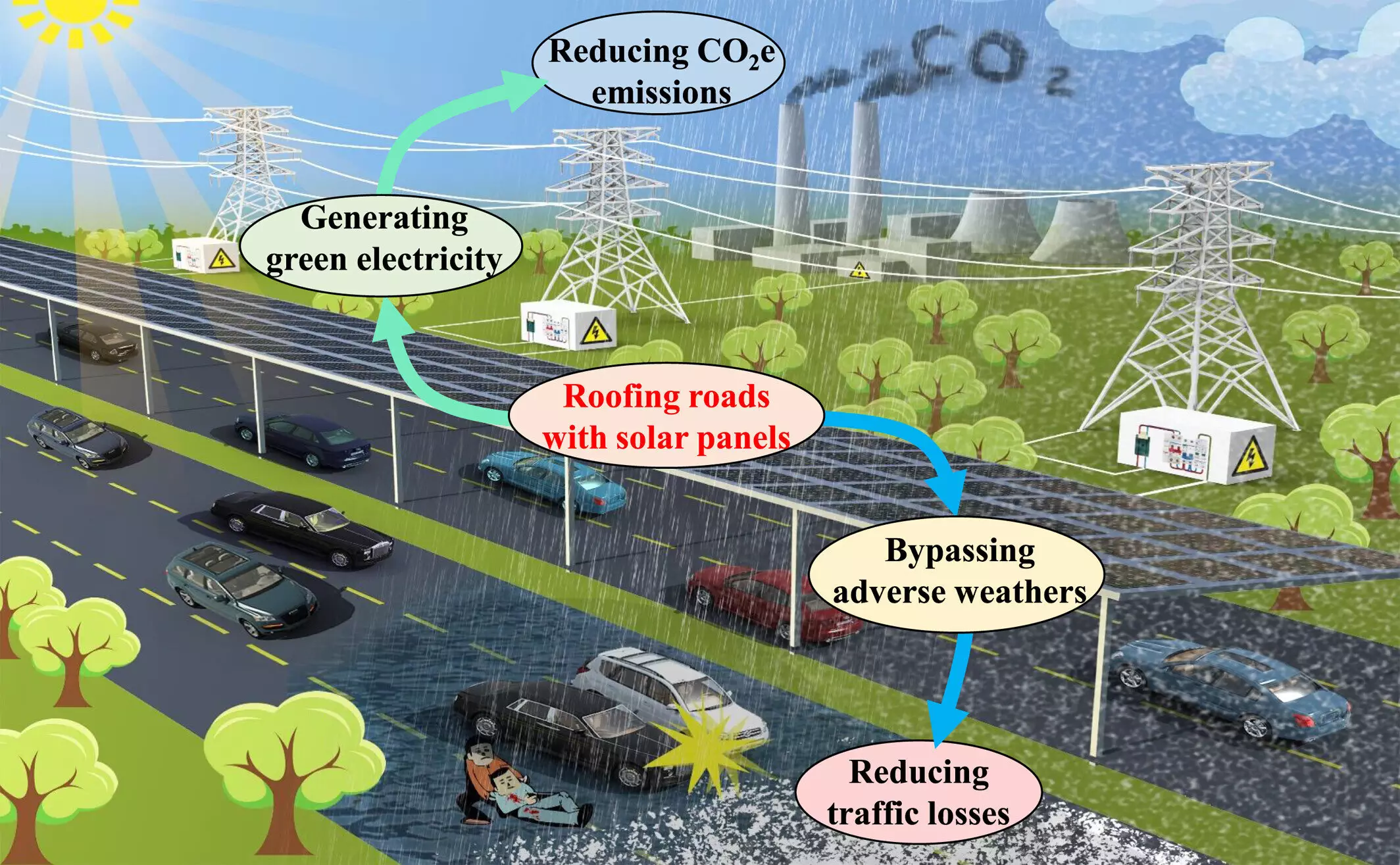As the world grapples with the urgent need to combat climate change, innovative approaches to reduce carbon dioxide emissions and enhance public safety are becoming increasingly crucial. A recent study presents an ambitious and transformative idea: equipping highways globally with solar panel roofs. The implications of this proposal are profound, suggesting a potential reduction in carbon emissions by approximately 28% and a significant decrease in road accidents, leading to both environmental and social benefits.
The core of this research, published in the journal *Earth’s Future*, envisions elevated solar panels installed over highways, which would not only serve as energy generators but also provide crucial protection for vehicles against the elements. Ling Yao, who led the study at the Chinese Academy of Sciences, proposes covering the world’s expansive network of highways—which spans over 3.2 million kilometers—with solar roofs. This extraordinary coverage could generate up to 17.58 petawatt hours of electricity annually, a staggering figure that exceeds 60% of the current global electricity consumption. Such a dramatic shift could help mitigate reliance on fossil fuels, aligning with the goals established by the International Panel on Climate Change to limit global warming to 1.5 degrees Celsius.
Yao’s inspiration struck during a routine commute, as he contemplated the interconnected nature of roads and their potential as a vast solar energy grid. By tapping into existing infrastructure, this proposal emphasizes productivity while addressing land-use concerns that often accompany renewable energy projects. The analysis reveals that the installation of around 52.3 billion solar panels could lead to the generation of an estimated 17,578 terawatt-hours of energy yearly—far surpassing the energy output of the United States.
Moreover, this initiative could replace approximately 9.66 gigatons of carbon emissions, equivalent to nearly two-thirds of the greenhouse gases released by the United States in 2022. Alongside environmental benefits, the study posits that the introduction of solar roofs could potentially lead to a 10.8% reduction in global traffic fatalities. This safety enhancement, particularly during adverse weather conditions, could contribute to lower economic costs associated with traffic accidents.
Despite the promise of solar highway roofs, there are significant challenges to consider. One major obstacle is the initial cost of installation, which is projected to be up to four times higher than traditional solar arrays. Additionally, ongoing maintenance presents logistical hurdles: cleaning countless solar panels and ensuring their efficient operation on a large scale will require innovative solutions and sustainable practices.
Furthermore, the geographical variation in costs and energy generation potential poses another layer of complexity. Optimal installations are likely to be concentrated in densely populated urban areas, such as eastern China, western Europe, and the U.S. East Coast, where highways are numerous and energy demands are high. Nevertheless, Yao maintains an optimistic outlook, emphasizing that successful pilot programs could demonstrate the practicality of this paradigm shift in energy generation.
The potential global impact of this innovative approach cannot be overstated. If fully realized, the concept of solar-covered highways could lead to a monumental shift in how we view infrastructure and energy production. Addressing not only environmental sustainability but also public health and safety, this idea encapsulates a necessary evolution in our approach to energy needs and urban planning.
Furthermore, as technology progresses and costs continue to decline, the feasibility of widespread adoption becomes increasingly plausible. The shift towards more sustainable practices is not merely an idealistic vision but a pressing necessity in our battle against climate change. Solar rooftops on highways offer a unique intersection between necessity and opportunity, promising a future where the very roads we travel become collaborators in energy generation.
The proposal for solar panel roofs over highways embodies a compelling vision for a sustainable future. By leveraging existing infrastructure to combat climate change and enhance road safety, this concept could pave the way for innovative energy solutions that resonate globally. While challenges remain, the new ideas highlighted by Yao and other researchers evoke a sense of hope and possibility. The path to a cleaner and safer world may very well lie in the solar skies above the highways we travel every day.


Leave a Reply